
Jean Armour, also known as the "Belle of Mauchline", was the wife of the poet Robert Burns. She inspired many of his poems and bore him nine children, three of whom survived into adulthood.
Jean Glover or Jennifer Glover (1758–1801) was a Scottish poet and singer. She was the daughter of James Glover, handloom weaver and Jean Thomson, born in Townhead, Kilmarnock; was well educated for the time she lived in, clever and sharp-witted. She had a fine singing voice and exceedingly good looks of "both face and figure".

Lesley Baillie (1768–1843), later Mrs Lesley Cumming, was born at Mayville, Stevenston, Ayrshire. She was a daughter of Robert Baillie and married Robert Cumming of Logie, Moray. Her lasting fame derives from being Robert Burns's 'Bonnie Lesley', "the most beautiful, elegant woman in the world". On her tombstone her name is given as Leslie Baillie.

Helen Anne Park, known as Anna Park or Ann Park, was born in 1769 at Moffat, Scotland. She was thought to have been the daughter of Joseph Park, an Edinburgh coachmaker, and Jean Dick. However, recent research has shown that she was actually the daughter of Walter Park and Elizabeth Blacklock. Margaret Ewing nee Park, a onetime landlady of 'The Globe', was her sister and she worked there as a barmaid. Anna bore the poet Robert Burns an illegitimate child named Elizabeth 'Betty' Burns as a result of an adulterous affair.
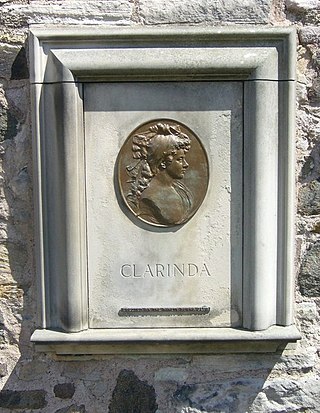
Agnes Maclehose, or Agnes Craig, known to her friends as Nancy and to Robert Burns followers as Clarinda, was a Scotswoman who had an unconsummated affair with Burns during 1787-88, on which he based the 1791 song "Ae Fond Kiss". The pseudonyms of her "Clarinda" to his "Sylvander" were adopted by the pair for confidential correspondence purposes. Maclehose, used here throughout, has been various styled, including "McLehose", "MacLehose" and "M'Lehose".
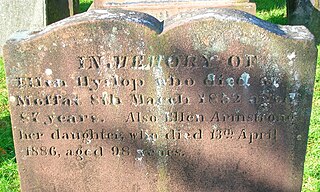
Helen Hyslop, also Nelly or Ellen Hyslop was a 'noted local beauty' in Moffat and a strong local tradition maintains that Robert Burns was for some time a great admirer of her and that she had an affair with him. A daughter, also Helen, is said to have been born as a result of this liaison. Parish records show that a Helen Hyslop, the mother of Burns's possible daughter, was born in the area in 1766, her parents being John Hyslop and Janet Howatson of Langholm.
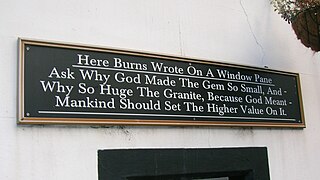
Robert Burns came to know James Cunninghamme, Earl of Glencairn in Edinburgh in 1786 through a 'Letter of Introduction' provided by Dalrymple of Orangefield who was married to Lady Glencairn's sister. The Earl received the poet warmly in his house and introduced him to his friends. One of several gifts from the earl to the poet was a diamond point pen, stylus, or cutter which he used to write upon many windowpanes and glasses, scribing verse, his signature, epigrams, or other writings for posterity. Many of these diamond-point engravings survive, some however are contentious as regards either their authenticity, meaning, or both.
James Armour was a master mason and father of Jean Armour, and therefore the father-in-law of the poet Robert Burns. His birth year was shown here as 1730. The Scotland's People database has no record of this year of birth for a James Armour. Wikitree and several other data sources have his birth date as 10th/24th January 1731. The Scotland's People database has this record but showing his baptism on 24 January 1731. His birth on the original Old Parish Record is shown as 15 January 1731 to John Armour and Margrat(sic) Picken in Kilmarnock. James named his first son John which would normally be after James's father i.e. John. The chances of there being two James's born on exactly the same date exactly one year apart appear very remote and the naming of the first child seems to validate the conclusion that James Armour was born in 1731 and not 1730.
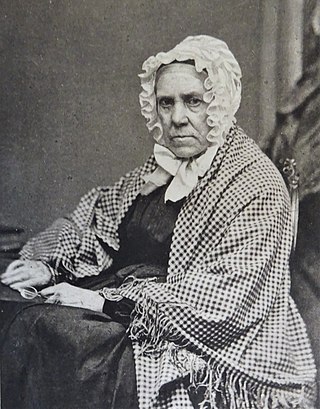
Elizabeth Burns, Elizabeth Park or Mrs John Thomson known as Betty Burns, was born in 1791 in Leith, Scotland. She was the illegitimate daughter of Robert Burns and Anna Park who was a barmaid at The Globe in Dumfries. She married John Thomson in 1808 to become Elizabeth Thomson.

Robert Aiken was one of Robert Burns's closest friends and greatest admirers. He was born in 1739 in Ayr, Scotland. His father John Aiken, was a sea captain who owned his own ships and his mother was Sarah Dalrymple, distantly related to the Dalrymples of Stair. He became a writer or lawyer in Ayr and was referred to by Burns as "Orator Bob" in his poem "The Kirk's Alarm". Robert was famous for the power, beauty and quality of his oratory as his nickname infers.

Alexander Cunningham was one of Robert Burns's closest friends from his time in Edinburgh. They stayed in contact, through at least 19 letters from the poet; and Cunningham was the ardent admirer who encouraged and joined others such as John Syme to raise funds for the poet's family after his death. Cunningham was one of the small group of associates whom Burns actively approached for constructive criticism of his work.
Jean Lorimer (1775–1831) was a friend of the poet Robert Burns, often referred to by him as the "Lassie wi' the lint-white locks" or "Chloris". Lorimer was born at Craigieburn House on a small estate near Moffat and from 1788 to 1791 was a neighbour of Burns when he was living at Ellisland Farm, her father's new farm being at Kemmishall or Kemys Hall, Kirkmahoe Parish, two miles to the south of Ellisland on the opposite bank of the Nith. Burns commented "The Lady on whom it was made, is one of the finest women in Scotland" in a letter to George Thomson, enclosing one of the two dozen or so songs that he wrote for her. They first met when she was a teenager through his excise duties bringing him to their farm.
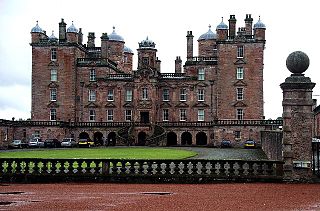
John McMurdo (1743–1803) was a friend of Robert Burns who became the chamberlain to the Duke of Queensberry at Drumlanrig Castle where the poet was a frequent visitor. His eldest daughter Jean (1777-1839) was also a close friend of Burns, who wrote the song "Bonie Jean" in her honour. As an old Nithsdale family the McMurdos were related to the Sharpes of Hoddam, the Charteris of Amisfield, the Fergussons of Craigdarroch, Dr James Currie and the Duncans of Torthorwald amongst others.

Edward Whigham (1750–1823) was the landlord of a coaching inn, a bailie, Provost of Sanquhar, bibliophile and one of Robert Burns's close friends during his Nithsdale and Dumfries days. Edward married Jane Osborne who died on 6 October 1846.

Francis Wallace Burns (1789–1803) was the second son of the poet Robert Burns, born when the poet was 30 and his wife Jean Armour was 24. Francis was born at Ellisland Farm in Dunscore parish, Nithsdale on the 18 August 1789. His first and middle names were added in honour of Frances Dunlop of Dunlop, Robert's friend, patron and mentor. Her maiden name was Frances Anna Wallace and what is known of his early life comes from the many letters to Frances in which he was mentioned. His father died in 1796 and little is known of Francis's short life after this date.

James Glencairn Burns (1794–1865) was the fourth son and eighth child born to the poet Robert Burns and his wife Jean Armour. James was born at their home in Mill Brae Street, now Burns Street in Dumfries on 12 August 1794. His first and middle name was added in honour of James Cunningham, 14th Earl of Glencairn, Robert's friend, patron and mentor.

William Nicol Burns (1791–1872) was the sixth child, third born and second surviving son born to the poet Robert Burns when he was 32 and his wife Jean Armour was 26. William was born at Ellisland Farm in Dunscore parish, shortly before the family moved to Dumfries in 1791. His first and middle name was added in honour of William Nicol, Robert's friend.
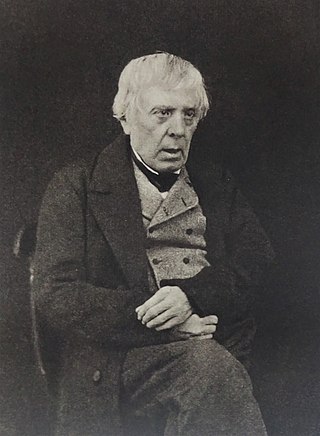
Robert Burns Junior or Robert Burns ll (1786–1857) was the first son and one of the first pair of twins born to the poet Robert Burns and his wife Jean Armour. He was born on the 3 September 1786 and baptised on 5 September. John Tennant of Glenconner was a witness at the baptism. His twin sister was Jean Burns, who died of unknown causes in infancy on 20 October 1787. His father, who often called him 'Bobbie', died when Robert Junior was only 9 years old, at which point he was the eldest of a family of five legitimate male offspring.

John Lewars (1769–1826) was an excise officer and land surveyor. He was one of Robert Burns's colleagues and friends during his Nithsdale and Dumfries days. John moved with his sister Jessie Lewars in around 1793 to a house in Millhole Brae that lay immediately opposite that of Robert Burns in Dumfries. Jessie Lewars was a very close Burns family friend and helped the family by nursing Robert in the days leading up to his death, doing the domestic chores and caring for the children.

William Maxwell (1769–1826) was a medical doctor who treated Robert Burns during his final illness. He was one of Robert Burns's intimate friends during his Nithsdale and Dumfries days, noted for his Jacobite links that struck a chord with the poet's own symapthies. His father, James Maxwell, took part in the 1745 uprising, and his grandfather, William, had fought in the 1715 uprising. Maxwell never married, but fathered a natural daughter, Elizabeth, who lived with him in Edinburgh.





















